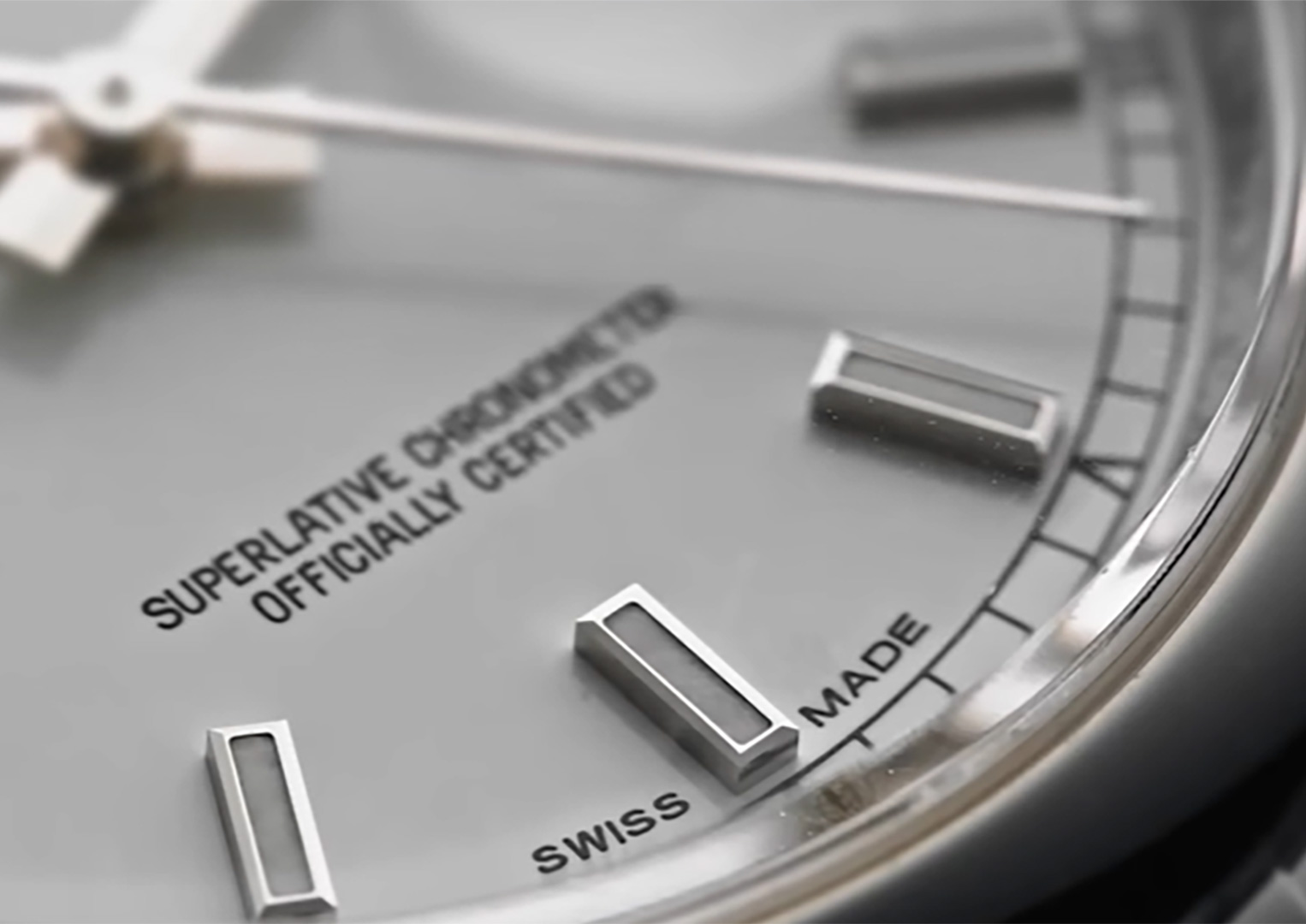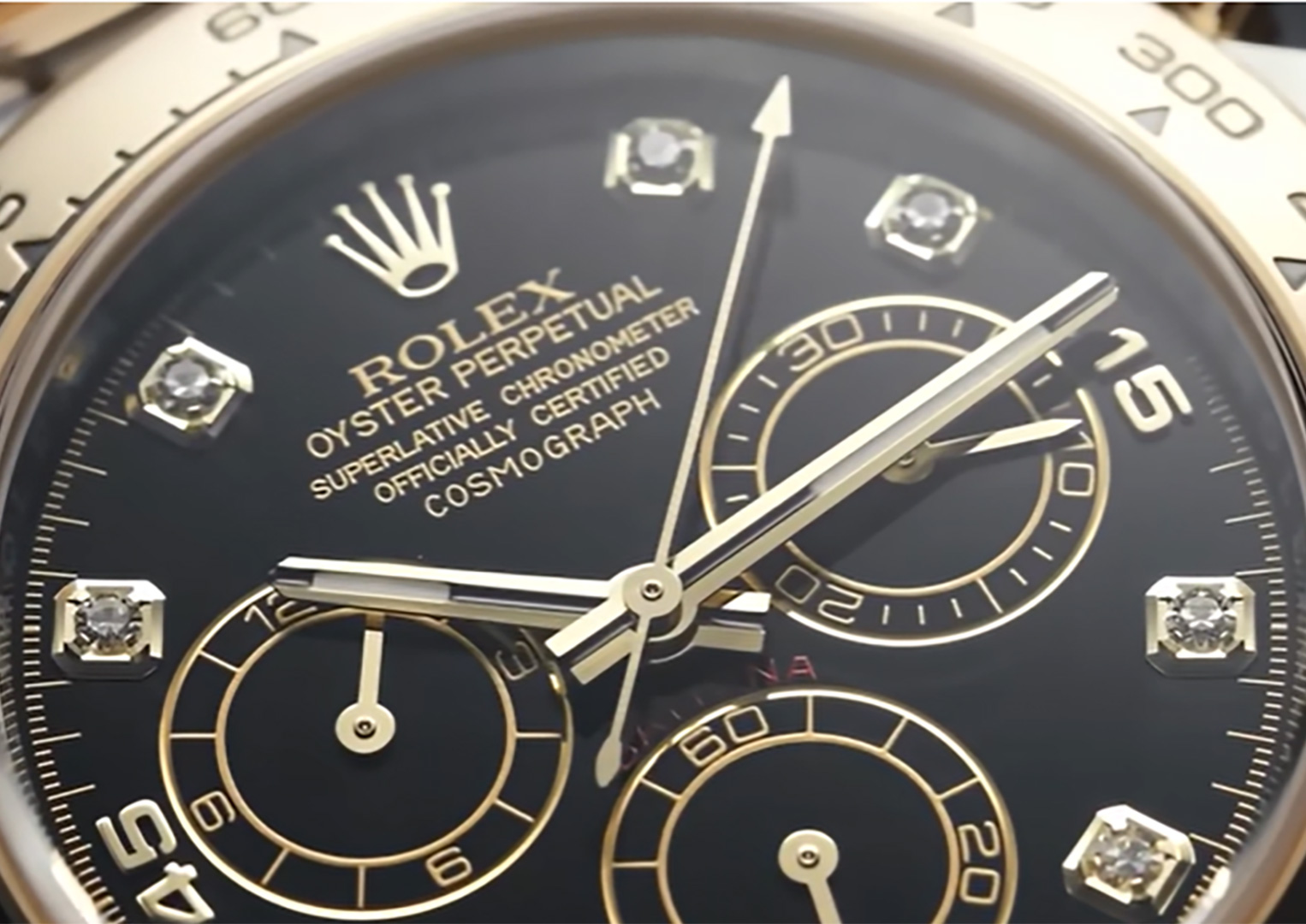Feature: 10 Rolex myths BUSTED
Being the most popular luxury wristwatch manufacturer in the world, there’s as much said about Rolex that’s true as not. So I’m here to separate fact from fiction and give you the truth on the almighty crown.
Rolex wasn’t founded in Switzerland

At the bottom of every Rolex dial are two words: Swiss Made. Rolex is as synonymous with Swiss watchmaking as peanut butter is to jelly in a sandwich, and so it’s basically a given that Rolex is indeed a Swiss watchmaker. Well, it is now, its many factories located across Switzerland producing all the components needed to build a watch, but that hasn’t always been the case. When Rolex was founded in 1905, it was based in Hatton Garden, London, England. The Rolex name came to founder Hans Wilsdorf in 1908 on a coach ride through London and the first chronometric ratings on Rolex watches were performed when Rolex was still based in London. It wasn’t until 1919, when post-war import duties made England prohibitively expensive to operate from, that Rolex moved to Geneva, Switzerland. Perhaps if the First World War had never happened, Rolex would still be British.
Rolex didn’t reach the top of Everest first

In 1953, pioneering Explorers Sir Edmund Hillary and Tenzing Norgay reached the summit of Everest for the very first time. Even today, Everest remains one of Earth’s greatest challenges, the frozen summit littered with the bodies of the unsuccessful. And once that peak had been conquered, a front-page Rolex ad was published celebrating the achievement of its watches surviving that great ordeal. Except, neither Sir Edmund Hillary nor Tenzing Norgay were wearing Rolex watches. It was a British expedition furnished with British equipment, including British Smiths watches. Smiths complained about the advert, prompting Rolex to acknowledge its mistruth and publish a letter of apology in the Horological Journal.
Rolex didn’t use 904L steel first

In 1985, Rolex made a fundamental change that was completely imperceptible. It switched the chemical makeup of its stainless steel from 316L to 904L. Outwardly identical, the alloy of 904L steel offers greater resistance to corrosion and pitting caused by sea water. It’s also believed that 904L steel is harder than 316L but the material is neither harder, nor stronger. It was first used by diving agency COMEX in its equipment, which prompted Omega to follow suit in 1972, badging the 904L “Uranus” steel. The experimental Ploprof was used to test 904L but Omega ultimately returned to 316L.
A Rolex was worn on the moon

It’s commonly believed that the Omega Speedmaster Moonwatch was the only watch worn on the moon, and that there was no Rolex ever worn on the moon. Yes, the Speedmaster was the first watch to be worn on the moon, but it wasn’t the only one. As well as a Bulova, the Rolex GMT-Master was a popular choice amongst astronauts, including ones that walked on the moon. Originally aimed at intercontinental pilots, the GMT-Master was worn by legends like Chuck Yeager, and so of course it became a personal choice for space-faring aviators too, many of whom had cut their teeth as military test pilots. Jack Swigert, Jim Lovell and Ron Evans were all known GMT-Master owners, but it’s Ed Mitchell who’s been confirmed to have worn it on the lunar surface. In fact, he is believed to have taken two GMT-Masters alongside his standard issue Omega.
Rolex watches weren’t always expensive

You don’t become the most famous luxury watch brand on Earth by starting expensive. By the 1950s, Rolex had earnt a reputation for its rugged wristwatches, and the changing tide from pocket watch wearing had given it an opportunity of a lifetime. It was in this period that Rolex did whatever it could to furnish the wrists of the most impressive people on the planet, including divers, explorer, pilots, soldiers and of course astronauts. Rolex watches weren’t just available in civilian stores, they were also for sale through the armed forces, and for prices even soldiers could afford. In fact, during World War Two, Rolex offered watches on loan to soldiers to be paid back once they returned. So rather than costing many months of the average salary like it does today, a Rolex watch could be purchased for less than a single month of a soldier’s salary.
Rolex failed the US Navy’s tests

Today the synergy between Rolex and the armed forces, particularly the Navy, is absolute, with the famous Sea-Dweller developed hand-in-hand with the US Navy’s experimental SEALAB project. This is where the Submariner evolved with the addition of a thicker case back and crystal, plus the helium escape valve that prevented the crystal popping off during decompression. But Rolex’s start with the US Navy was not smooth sailing. Upon submitting the first Rolex Submariner for trials in 1958, the US Navy rejected the watch, citing it as “not sufficiently waterproof”. The US Navy levied other complaints at the Rolex, listing the bezel as easily jammable in mud and the crystal prone to fogging.
A Rolex isn’t the highest quality watch

It’s true that Rolex has earnt a reputation for being the single most successful luxury brand in the entire world, but that doesn’t mean it’s the best. Far from it, in fact. A Rolex watch draws its lineage from a collection of rugged but ultimately simple timekeepers that are a long way shy of being the best in any category, least of all quality. When Rolex was founded in 1905, it was already centuries behind the competition, so rather than trying to challenge the industry on what already existed, it updated the formula from delicate, artisanal creations to robust, professional tools. For a diver or a pilot, there’s no need for extravagance. Operational reliability was all that was needed. And so even though Rolex today has added a bit of shine to its watches, they still don’t attempt to compete with the best on quality. That’s just not who they are.
Rolex watches do tick

A common trick for spotting a fake Rolex is to look for a ticking second hand, but in actual fact, every Rolex ticks. A quartz movement, often used in cheap fakes, ticks once per second to extend the battery life, where the mechanical movement in a genuine Rolex appears to have a smooth sweep. It is in fact ticking eight times per second, almost imperceptible to the human eye. Also, these days, fake Rolex watches do have mechanical movements. If you want to determine real from fake, it’s possible by the feel of the wind through the crown, which should be smooth and can feel gritty on a fake. Really, the movement itself needs to be inspected by eye.
Tudor is not the only Rolex sub-brand

In 1927, Rolex founder Hans Wilsdorf had the foresight to create an affordable offshoot of his famous brand so he could widen his market and sell more watches to more people, and more organisations. The Tudor brand was adopted by many of the world’s armed forces above and beyond the equivalent Submariner because it was cheaper, but no less effective. But Tudor didn’t stand alone as a Rolex offshoot, because Hans Wilsdorf registered a long list of brand names that would also go on to be used on the dials of production watches. Brands like Marconi, Unicorn, RolCo, Oyster Watch Co, Genex and even Omigra.
Rolex watches aren’t rare

The availability of Rolex watches these days would very much suggest their rarity. Windows displaying exhibition only models are rife the world over, with many hot models trading well above retail. But the reality is that Rolex watches are not as scarce as you might think. There are watchmakers making watches by the tens of thousands, thousands and even hundreds. By comparison, Rolex is estimated to be making a million watches every year. And there’s more, because construction is underway on a new $1.1 billion manufacturing facility that will be able to up production by 2029 to meet the enormous demand. Maybe then we’ll see waitlists shrink to a reasonable level.
What Rolex myths do you know that need some busting?




